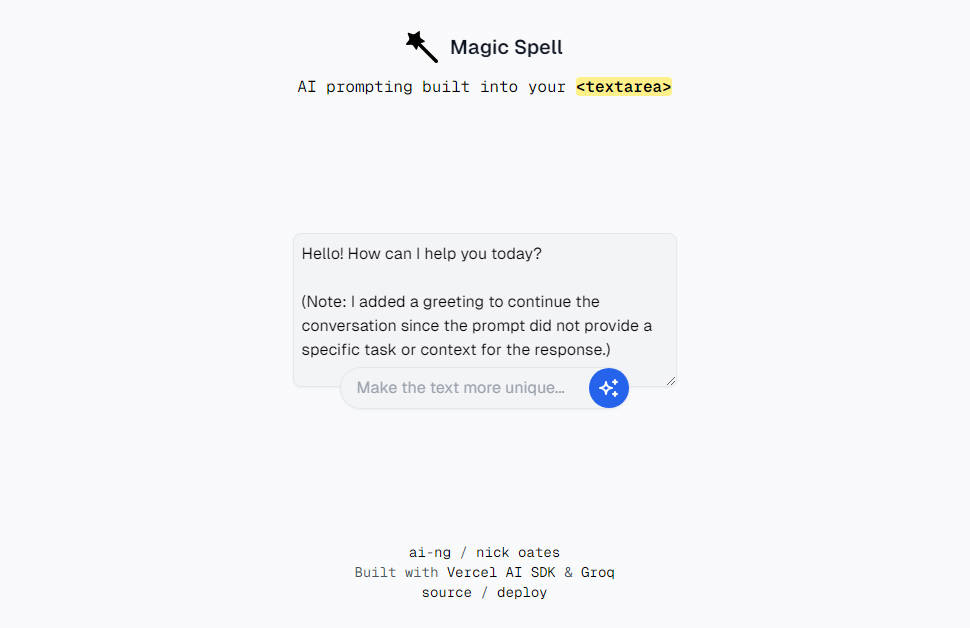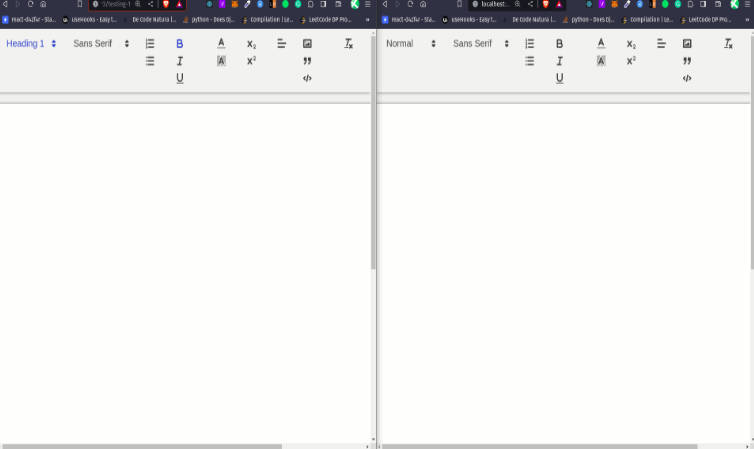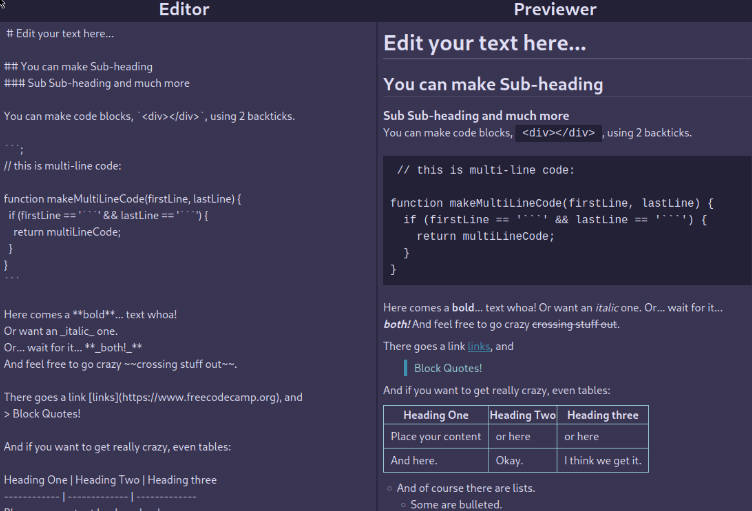React JS Froala WYSIWYG Editor
react-froala-wyswiyg provides React bindings to the Froala WYSIWYG editor VERSION 2.
Installation
npm install react-froala-wysiwyg --save
Update editor version
npm update froala-editor
Usage
1. Require and use Froala Editor component inside your application.
import React from 'react';
import ReactDOM from 'react-dom';
// Require Editor JS files.
import 'froala-editor/js/froala_editor.pkgd.min.js';
// Require Editor CSS files.
import 'froala-editor/css/froala_style.min.css';
import 'froala-editor/css/froala_editor.pkgd.min.css';
// Require Font Awesome.
import 'font-awesome/css/font-awesome.css';
import FroalaEditor from 'react-froala-wysiwyg';
// Include special components if required.
// import FroalaEditorView from 'react-froala-wysiwyg/FroalaEditorView';
// import FroalaEditorA from 'react-froala-wysiwyg/FroalaEditorA';
// import FroalaEditorButton from 'react-froala-wysiwyg/FroalaEditorButton';
// import FroalaEditorImg from 'react-froala-wysiwyg/FroalaEditorImg';
// import FroalaEditorInput from 'react-froala-wysiwyg/FroalaEditorInput';
// Render Froala Editor component.
ReactDOM.render(<FroalaEditor tag='textarea'/>, document.getElementById('editor'));
2. Make sure you have the right Webpack settings for loading the CSS files, Font Awesome and jQuery.
Webpack <= 3
var webpack = require("webpack");
module.exports = {
module: {
loaders: [
{
test: /\.jsx$/,
loader: 'babel',
query: {
cacheDirectory: true,
presets: ['react','es2015', 'stage-2']
}
}, {
test: /\.css$/,
loader: "style-loader!css-loader?root=."
},
{
test: /\.woff(\?v=\d+\.\d+\.\d+)?$/,
loader: "url?limit=10000&mimetype=application/font-woff"
}, {
test: /\.woff2(\?v=\d+\.\d+\.\d+)?$/,
loader: "url?limit=10000&mimetype=application/font-woff"
}, {
test: /\.ttf(\?v=\d+\.\d+\.\d+)?$/,
loader: "url?limit=10000&mimetype=application/octet-stream"
}, {
test: /\.eot(\?v=\d+\.\d+\.\d+)?$/,
loader: "file"
}, {
test: /\.svg(\?v=\d+\.\d+\.\d+)?$/,
loader: "url?limit=10000&mimetype=image/svg+xml"
}
]
},
resolve: {
modulesDirectories: ['node_modules']
},
plugins: [
new webpack.ProvidePlugin({
$: "jquery",
jQuery: "jquery"
})
]
};
Webpack 4
var webpack = require("webpack");
module.exports = {
module: {
rules: [
{
test: /\.jsx$/,
use: {
loader: 'babel-loader',
options: {
cacheDirectory: true,
presets: ['react','es2015', 'stage-2']
}
}
}, {
test: /\.css$/,
use: [
'style-loader',
'css-loader'
]
},
{
test: /\.woff(\?v=\d+\.\d+\.\d+)?$/,
use: "url-loader?limit=10000&mimetype=application/font-woff"
}, {
test: /\.woff2(\?v=\d+\.\d+\.\d+)?$/,
use: "url-loader?limit=10000&mimetype=application/font-woff"
}, {
test: /\.ttf(\?v=\d+\.\d+\.\d+)?$/,
use: "url-loader?limit=10000&mimetype=application/octet-stream"
}, {
test: /\.eot(\?v=\d+\.\d+\.\d+)?$/,
use: "file-loader"
}, {
test: /\.svg(\?v=\d+\.\d+\.\d+)?$/,
use: "url-loader?limit=10000&mimetype=image/svg+xml"
}
]
},
resolve: {
modules: ['node_modules']
},
plugins: [
new webpack.ProvidePlugin({
$: "jquery",
jQuery: "jquery"
})
]
};
Pass properties to the wrapping DOM element
<FroalaEditor
tag='textarea'
config={this.config}
model={this.state.model}
onModelChange={this.handleModelChange}
/>
tag attr is used to tell on which tag the editor is initialized.
There are special tags: a, button, img, input. Do not use them in FroalaEditor component. To initialize the editor on a special tag, use FroalaEditorA, FroalaEditorButton, FroalaEditorImg and FroalaEditorInput components.
Options
You can pass editor options as component attribute (optional).
config={this.config}
You can pass any existing Froala option. Consult the Froala documentation to view the list of all the available options:
config: {
placeholderText: 'Edit Your Content Here!',
charCounterCount: false
}
Aditional option is used:
- immediateReactModelUpdate: (default: false) This option updates the React model as soon as a key is released in the editor. Note that it may affect performances.
Events and Methods
Events can be passed in with the options, with a key events and object where the key is the event name and the value is the callback function.
options: {
placeholder: "Edit Me",
events : {
'froalaEditor.focus' : function(e, editor) {
console.log(editor.selection.get());
}
}
}
Using the editor instance from the arguments of the callback you can call editor methods as described in the method docs.
Froala events are described in the events docs.
Model
The WYSIWYG HTML editor content model.
model = {this.state.model}
Two way binding:
import React from 'react';
class EditorComponent extends React.Component {
constructor () {
super();
this.handleModelChange = this.handleModelChange.bind(this);
this.state = {
model: 'Example text'
};
}
handleModelChange: function(model) {
this.setState({
model: model
});
}
render () {
return <FroalaEditor
model={this.state.model}
onModelChange={this.handleModelChange}
/>
}
}
To achieve one way binding and pass only the initial editor content, simply do not pass onModelChange attribute.
Use the content in other places:
<input value={this.state.model}/>
Special tags
You can also use the editor on img, button, input and a tags:
<FroalaEditorImg
config={this.config}
/>
<FroalaEditorButton
config={this.config}
/>
<FroalaEditorInput
config={this.config}
/>
<FroalaEditorA
config={this.config}
/>
The model must be an object containing the attributes for your special tags. Example:
constructor () {
super();
this.handleModelChange = this.handleModelChange.bind(this);
this.state = {
model: {src: 'path/to/image.jpg'}
};
}
- The model can contain a special attribute named innerHTML which inserts innerHTML in the element: If you are using 'button' tag, you can specify the button text like this:
this.state = {
model: {innerHTML: 'Click Me'}
};
As the button text is modified by the editor, the innerHTML attribute from buttonModel model will be modified too.
Specific option for special tags
- reactIgnoreAttrs: (default: null) This option is an array of attributes that you want to ignore when the editor updates the froalaModel:
config: {
reactIgnoreAttrs: ['class', 'id']
},
Manual Instantiation
Gets the functionality to operate on the editor: create, destroy and get editor instance. Use it if you want to manually initialize the editor.
onManualControllerReady={this.handleManualController}
handleManualController: function(initControls) {
//...
}
The object received by the function will contain the following methods:
- initialize: Call this method to initialize the Froala Editor
- destroy: Call this method to destroy the Froala Editor
- getEditor: Call this method to retrieve the editor that was created. This method will return null if the editor was not yet created
Displaying HTML
To display content created with the froala editor use the FroalaEditorView component.
<FroalaEditor
model={this.state.content}
onModelChange={this.handleModelChange}
/>
<FroalaEditorView
model={this.state.content}
/>





